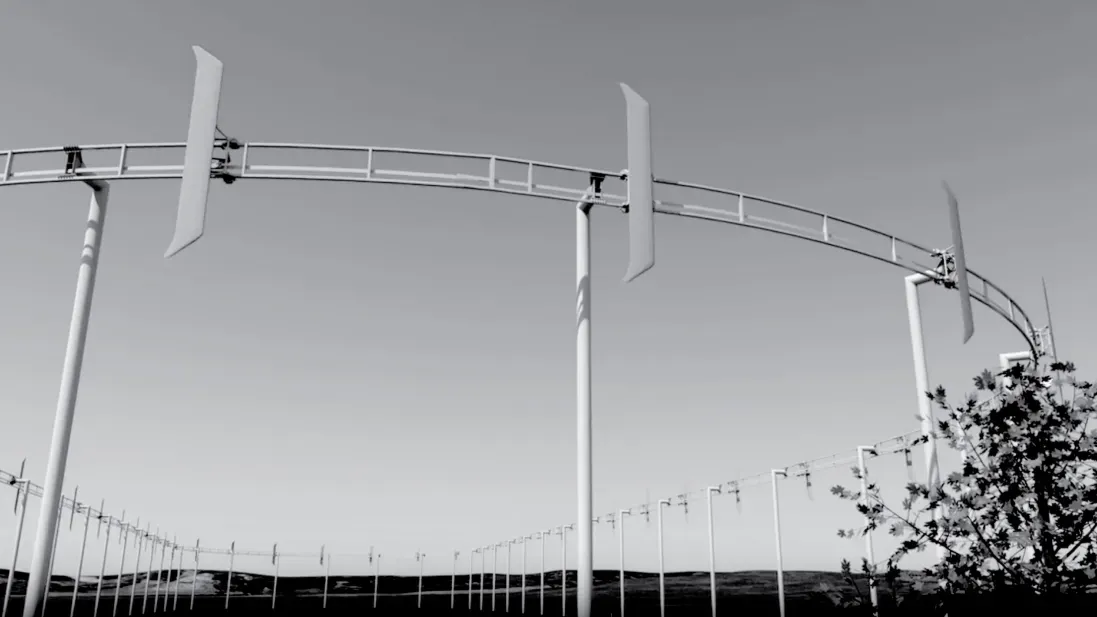Airloom Energy Starts Building Its First Power Plant with a Game-Changing Wind Design
Airloom Energy, the Bill Gates-backed startup, has officially started construction on its first wind power plant, aiming to revolutionize the renewable energy industry with its innovative design. Unlike traditional towering turbines, Airloom’s system uses shorter blades attached to a looping cable track to reduce costs, simplify maintenance, and operate closer to the ground. This development has sparked intense interest across the tech and energy sectors, especially as wind energy faces political resistance and economic challenges in 2025. For those searching how Airloom Energy plans to reshape wind energy production, or whether this novel approach can overcome rising wind power costs, here’s everything you need to know.
 Image Credits:AirLoom Energy
Image Credits:AirLoom Energy
Airloom Energy’s Wind Power Vision Could Disrupt the Industry
Wind energy has struggled recently with cost overruns and political opposition. Airloom Energy is directly tackling both of these issues with a new kind of wind power system that breaks from the conventional turbine design. Rather than building skyscraper-like structures topped with three sweeping blades, the company is building oval tracks about 60 feet high, on which small blades are mounted and move continuously along the track. This modular, ground-accessible system slashes construction costs, improves safety, and opens up land for dual-use like solar panel installations or farming beneath the structure.
According to CEO Neal Rickner, the pilot plant in Laramie, Wyoming, will prove Airloom’s potential to deliver electricity for around $60 per megawatt-hour — a competitive rate even without subsidies. Unlike traditional designs that require enormous upfront capital, Airloom’s system is designed to scale, allowing for future upgrades without overhauling the entire infrastructure. That’s especially important as wind energy developers look for flexible, scalable, and cost-effective solutions in the current energy market.
Why Airloom Energy’s First Power Plant Matters Right Now
The launch of Airloom’s first pilot power plant comes at a critical time. Despite a decade of progress, wind energy has recently seen flat or even rising costs, with 2024 estimates reaching $61 per megawatt-hour according to Lazard. Political rhetoric has also targeted the wind industry, with figures like former President Donald Trump vocally opposing its expansion. In this environment, Airloom Energy stands out as a bold and timely response. Its compact systems can be deployed quickly and at lower costs, sidestepping some of the criticisms often leveled at traditional wind farms.
The pilot installation will produce about 150 kilowatts, but it’s built using components intended for a future megawatt-scale version. This not only saves on development costs but also acts as a real-world proof of concept. The initial track is about the size of a high school running track, while the commercial-scale version will use much longer 500-meter straights. This approach reduces testing risks and accelerates the path toward deployment. Airloom’s forward-thinking model appeals to military bases and data centers, both of which prioritize energy reliability and rapid deployment — two areas where this system excels.
What the Future Looks Like for Airloom Energy
Airloom’s roadmap projects the rollout of a full-scale 3-megawatt commercial system by 2027 or 2028. While slightly delayed from earlier estimates, this timeline remains competitive for a first-of-its-kind clean energy solution. The company’s dual-use approach — allowing solar installations or agriculture to coexist with its wind system — further enhances its appeal, particularly in rural or mixed-use areas.
By reimagining how wind power is generated, Airloom Energy could spark a broader shift in how wind farms are planned and built. This is not just about smaller systems; it’s about smarter systems that require fewer resources, offer easier access for repairs, and minimize community disruption. For stakeholders in energy innovation, sustainability-focused investors, or environmental engineers exploring next-gen wind technologies, Airloom’s pilot site is more than a testbed — it's the possible blueprint for the future of wind power.

